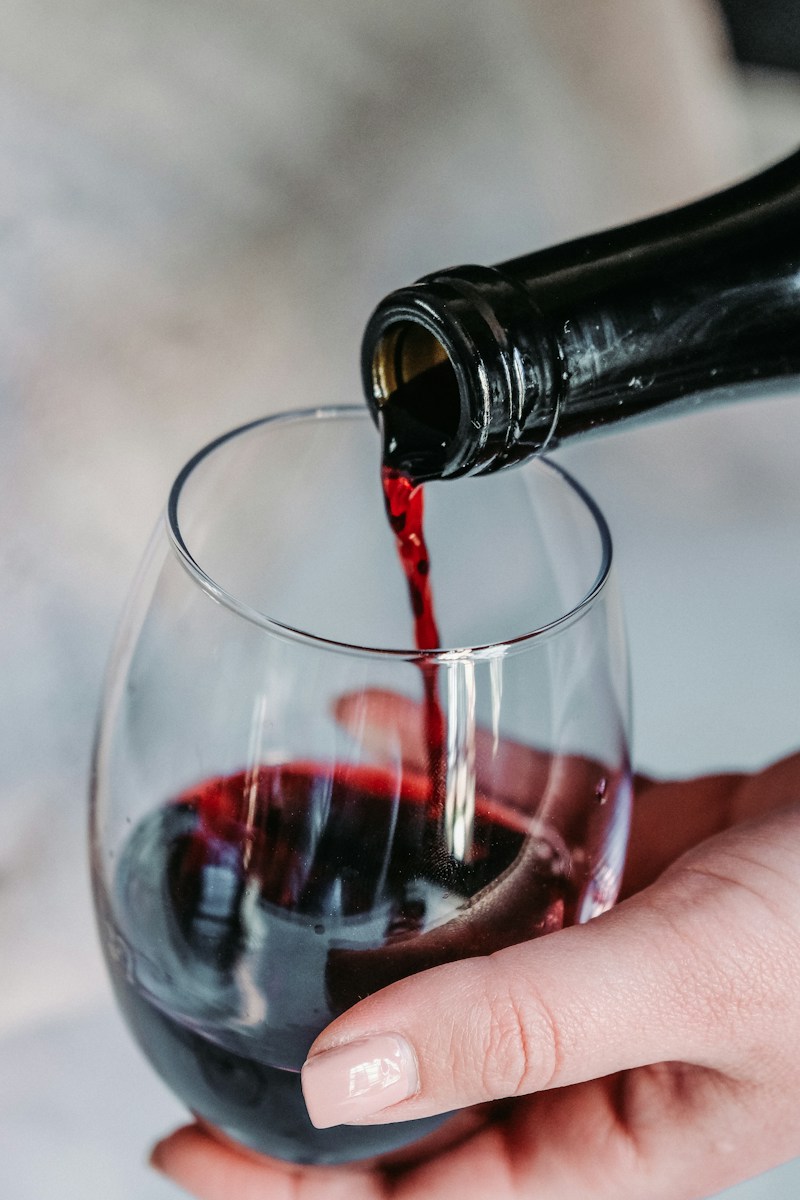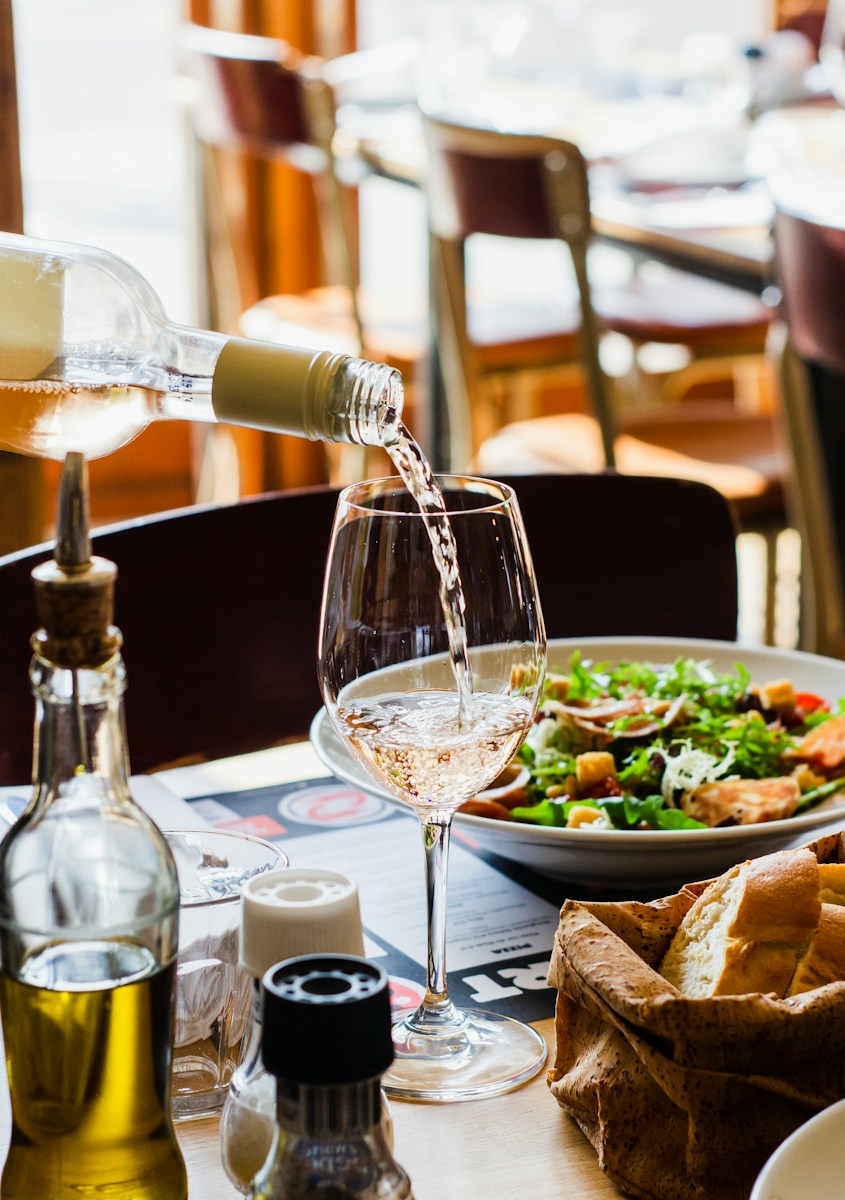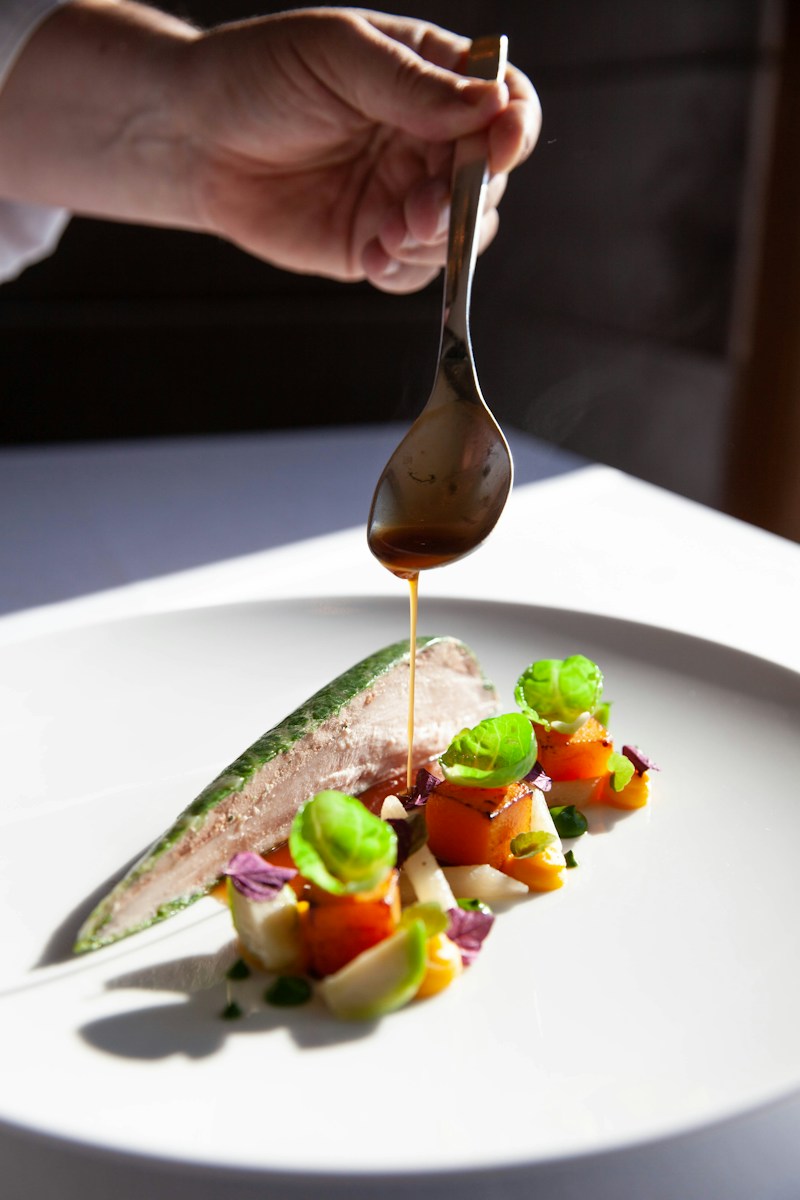If you’ve ever wondered why certain wines taste better with specific foods, you’re about to embark on a journey of taste and discovery. Mastering food and wine pairing isn’t just for sommeliers, it’s a skill any connoisseur can learn.
You’ll find there’s a world of flavor combinations waiting to be explored. From the rich, robust reds that complement hearty meals, to the crisp, light whites that accentuate delicate seafood dishes, understanding how to pair food and wine can elevate your dining experience.
So, get ready to dive into the art of pairing. It’s not just about what’s on your plate or in your glass, it’s about how they work together to create a symphony of flavors. Stay tuned as we delve deeper into this fascinating topic.
The Basics of Food and Wine Pairing

Start by embracing a world where the balance between food and wine is key. Let’s dive into how you can heighten your dining experience with a thoughtful pairing strategy.
Firstly, matching the weight of your food with your wine is crucial. Robust foods like steak or roast lamb, demand an equally hearty wine. A full-bodied red like Cabernet Sauvignon is your go-to here. Lighter dishes such as poached salmon or grilled vegetables would be overwhelmed by a heavy red. Instead, pair them with a lighter white wine like Sauvignon Blanc.
Next, consider the primary flavors in your dish. The five basic tastes identified by our taste buds are sweet, salty, bitter, sour, and umami (savory). Each of these reacts differently to various wines. For example, salt diminishes bitterness and enhances sweetness in wine. Therefore, a salty cheese pairs well with a sweet wine like Port.
Remember, the prominence of acid in a wine is crucial. High-acid wines can brighten up a rich, fatty dish, and even match a tart dish. For example, a sprightly Sauvignon Blanc goes remarkably well with tangy goat cheese. Similarly, a zippy Riesling is an excellent match for fatty foods like pork or duck.
Moreover, certain spices orchestrate a symphony with specific wines. The heat kick from spicy food finds its match with sweet wines like Riesling. Dishes with herbs like mint or dill pair beautifully with herbal wine counterparts such as Sauvignon Blanc or Cabernet Franc.
It’s important to note, though, that this is not a formula, but rather a guide. To some degree, it’s dependent on personal taste. It might be helpful to keep a journal of your favorite pairings. It could be useful in your personal exploration of the intriguing relationship between food and wine.
In the end, the grand purpose of pairing food and wine is to elevate both the dish and drink to a level they couldn’t achieve on their own. Let’s move forward to gain more insights into this enchanting gastronomic journey. The coming sections will delve deeper into advanced strategies for food and wine pairing.
Understanding the Role of Wine Acidity

Let’s dive into the crucial aspect of pairing food and wine – acidity. Acidity in wine is paramount when you’re putting your connoisseur hat on to pair your flavorful dishes with the right wine variety.
Acidity is that mouthwatering tang that accentuates the flavors of your food. It’s akin to the zing lemon or balsamic vinegar added to a dish, brightening up all its components. That’s what acidity does to wine – it sharpens the flavors, making the wine vibrant and more enjoyable to drink.
When it’s about harmonizing your dish with a bottle of wine, the acidity level is something that you just can’t afford to overlook. A high-acid wine can stand up to a rich, fatty dish like a cheesy lasagna or a creamy risotto. The acidity cuts through the fat, balances the richness, and adds a refreshing touch to your meal.
Still not convinced of the magic of acidity? Try pairing some fatty smoked salmon with a low-acid Chardonnay and then with a high-acid Sauvignon Blanc. You’ll notice the difference. The high acidity acts like a squeeze of lemon on the salmon enhances the flavors, and cuts the richness of the fish, creating a harmonious pair.
Navigating your way to an enlightened food and wine experience doesn’t end here. There’s one thing that stands between a decent and an excellent pairing: The contrast.
Contrast isn’t just limited to flavors. It applies to textures, aromas, and even temperature. A refreshing cool Chablis is a classic counterpoint to the hot, creamy richness of a clam chowder. An aged, textured Barolo can provide an exquisite contrast to a tender, velvety beef stew. Experiment with contrasts in your pairings, and you’ll unlock a new level of gastronomic pleasure.
As you’re exploring the enchanting world of wine and food pairing, remember that it’s your personal journey and there’s no one-size-fits-all. What might work for one might not work for another. Keep tasting, keep exploring, and most importantly: keep having fun.
Matching Intensity: Finding the Right Balance

As you delve deeper into the realm of food and wine pairing, you’ll find that matching the intensity of both the food and wine is vital. In fact, intensity balance is a key aspect that can either enhance or disrupt your pairing experience.
Imagine this scenario: a delicate white fish paired with a robust Cabernet Sauvignon. What do you think might happen? The powerful flavors of the wine will unquestionably overwhelm the delicate fish, masking its subtle flavors. The pairing fails because the intensities are not balanced.
Pairing according to intensity ensures that neither your food nor wine overpower each other. So how can you achieve this balance?
Consider the weight or body of both the wine and dish. The wine’s body could be light, medium, or full, just like the food can be light or hearty. Therefore, a general rule is to match light wines with light foods, and hearty wines with hearty dishes. A chicken salad, for instance, pairs well with a light-bodied Sauvignon Blanc, while a steak would go better with a full-bodied Cabernet Sauvignon.
In addition to the weight, think about the flavor strength. Intense flavors demand wines with the same caliber. Spicy, rich, or aromatic foods often pair well with bold, high-intensity wines. On the flip side, a milder dish such as a mushroom risotto would work well with a less intense, subtle Chardonnay.
In the end, pairing food and wine isn’t just a skill, it’s an art form. The more you experiment with different combinations, the better you’ll understand the nuances that make each pairing unique. Getting the intensity balance right is just one piece of this complex puzzle. There’s a world of aromas, textures, flavors, and contrasts waiting for you to explore. Keep venturing forth on your expedition to master food and wine pairing.
Exploring Flavor Profiles: Aromas and Tastes
Once you’ve mastered the basics of intensity balance, it’s time to dive deeper into the world of food and wine pairing. This involves exploring the nuances of different flavor profiles, including the elements of aroma and taste. Aromas and tastes are critical factors when it comes to pairing food and wine, as they determine how well the two complement each other.
Wine, much like food, possesses a multitude of distinct flavors and aromas. When tasting a wine, you’re likely to detect primary, secondary, and tertiary aromas. Primary aromas come from the fruit, flower, or specific varietal characteristics of the wine. Secondary aromas are derived from the winemaking process, and tertiary aromas, often the most complex, develop as the wine ages.
In the context of food, flavors can be categorized under five basic taste profiles: sweet, sour, salty, bitter, and umami. Each of these has potential counterparts in wine. For instance, a sweet dish may be balanced with a wine that has a hint of sweetness.
Different types of wine are known for particular flavor profiles. Pinot Noir, for instance, often gives off primary notes of ripe red fruit like cherry and strawberry. Chardonnay, on the other hand, can exhibit secondary notes of vanilla and butter due to the winemaking process.
The key is to take into account these intricate flavor profiles when pairing wines with food. You could find that a bottle of Cabernet Sauvignon pairs magnificently with a succulent steak due to its full-bodied nature and abundance of tertiary aromas, such as tobacco and leather. Or perhaps an off-dry Riesling is your preferred match for spicy Asian cuisine thanks to its primary notes of sweet fruit which balance the heat.
Pairing food and wine involves more than just matching intensity – it’s about exploring and experimenting with different aromas and tastes. It’s a journey that should be savored every step of the way.
Pairing Wine with Specific Types of Foods
Continuing your foray into the realm of food and wine pairing, you would naturally want to know how to pair specific types of dishes with respective wines. Knowing which wine to serve with what kind of food is not just an art, but also a delightful science that can greatly enhance your gastronomic experience.
Let’s delve into some categories of food and their ideal wine companions.
Red Meats
Red meats, like beef and lamb, are traditionally served with full-bodied red wines – think Cabernet Sauvignon, Merlot or Syrah. These wines can stand up to the robust flavors of the meats, creating a balance on your palate that’s intensely gratifying.
Poultry and Fish
For lighter meats such as poultry or fish, you’d usually go for a lighter and more crisp wine. Whites like Pinot Grigio, Sauvignon Blanc, and Chardonnay are commonly used. However, a light-bodied red like Pinot Noir can also work well with these dishes, providing a delightful contrast.
Spicy Foods
When serving spicy foods, picking a wine that can handle the heat is tricky. Favor off-dry or sweet white wines such as Riesling or Chenin Blanc. They help temper the spices and refresh your palate.
Cheese
Cheese and wine are a classic pairing, but it’s not a one-size-fits-all situation. Depending on the type of cheese, you’d choose a different wine. Bold cheeses like blue cheese or camembert call for sweet white wines like Riesling or Sauternes, while mild cheeses like Brie or Feta pair well with light-bodied reds or crisp white wines.
This knowledge can enhance your dining experience and impress your guests. Remember, the journey of food and wine pairing is about exploration and finding what you enjoy. So, don’t fear to step out of these guidelines and experiment.
The Art of Pairing: Experimenting and Discovering
Discovering the perfect pairing isn’t just about rules, it’s also about enjoying the journey and experimenting along the way. Keep in mind, the idea of a “perfect” pair isn’t set in stone. Everyone’s palate is unique and the key to a good pairing is to find what works for you.
For instance, when exploring how a wine complements certain foods, concentrate on the wine’s flavor profiles. Note the subtle hints of fruit, spice, and earthiness. Then, think about how these flavors can harmonize with different types of dishes.
Let’s consider a spicy dish. Some would immediately think of pairing it with a sweet wine to balance the heat. But, what if you want to amplify that kick with a robust, spicy red? Or, perhaps you’d like a more earthy flavor to accompany those spicy tones.
Let’s move on to cheeses. They are exceptionally diverse in flavor, ranging from creamy and light, to bold and rich. To match cheese with wine, consider the strength of each flavor.
| Cheese | Wine Example |
|---|---|
| Light, creamy cheese (like Brie) | Crisp, white wine (like Sauvignon Blanc) |
| Pungent, blue cheese (like Gorgonzola) | Sweet, dessert wine (like Sauternes) |
| Strong, hard cheese (like Cheddar) | Full-bodied, red wine (like Cabernet Sauvignon) |
This is just a starting point. As you taste different combinations, you’ll develop your unique preferences. Hence, do not let the “rules” limit your enjoyment and exploration of wine and food pairings.
Conclusion
Mastering the art of food and wine pairing isn’t just about following rules, it’s about embarking on a journey of taste discovery. You’ve learned that different wines have unique flavor profiles that can be matched with various dishes to enhance your dining experience. Whether it’s a full-bodied red wine with red meats or lighter wines with poultry or fish, there’s a perfect pairing out there for you. Remember, spicy foods and different types of cheese also have their ideal wine companions. So, don’t be afraid to experiment and explore. It’s through this process of trial and error that you’ll truly savor every step of your food and wine pairing journey.
What is the primary focus of this article?
The main focus of this article is to educate readers about the art of pairing wine with food, emphasizing the importance of exploring different flavor profiles.
Which types of food should pair with full-bodied red wines?
Full-bodied red wines are ideally paired with red meats.
How should I pair wine with poultry or fish?
Lighter wines generally complement poultry or fish, according to the article.
What guidance does the article provide for pairing wine with spicy foods?
The article provides guidance on experimenting with flavors when pairing wine with spicy foods. However, specific wine suggestions may vary.
Which types of cheese does the article discuss pairing with wine?
While the article mentions pairing wine with different types of cheese, it does not provide specific cheese varieties.
What stance does the article take on the process of pairing food and wine?
The article views the process of pairing food and wine as a journey of exploration and experimentation, to be savored at each step.


